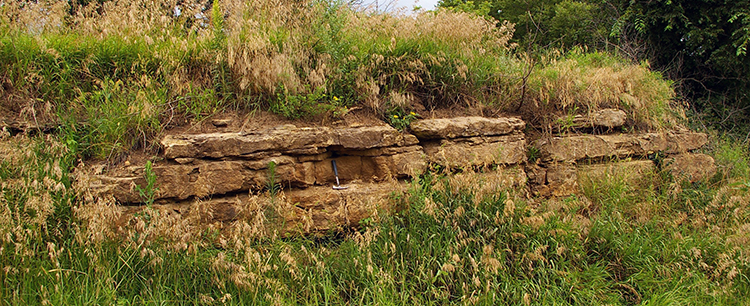Dolomite

Dolomite is very similar to limestone, and they are difficult to tell apart based only on appearance. The difference between the two is that limestone is composed mainly of the mineral calcite (made up of a combination of calcium, carbon, and oxygen) and dolomite is composed mainly of a mineral that is also called dolomite, which is like calcite with magnesium added.
A fine- to coarse-grained rock, dolomite is generally gray or light in color in its unweathered state. It weathers to a buff or tan color when exposed to the elements. Dolomite is used in much the same way as limestone, including as building material and a component of cement.
Dolomite is found mainly in central and southern Kansas. The Stone Corral Dolomite, in central Kansas, is up to six feet thick in Rice County. In the Red Hills, the Day Creek Dolomite is about two-and-a-half feet thick in Clark County. This dolomite, which crops out at Clark State Fishing Lake, formed in the enclosed evaporating basin of the Permian sea.
Resources
Buchanan, R., 2010, Kansas Geology: An Introduction to Landscapes, Rocks, Minerals, and Fossils (2nd ed.): Lawrence, Kansas, University Press of Kansas, 240 p.
Buchanan, R., and McCauley, J. R., 2010, Roadside Kansas: A Traveler's Guide to Its Geology and Landmarks (2nd ed.): Lawrence, Kansas, University Press of Kansas, 392 p.
Kansas Rocks and Minerals, Kansas Geological Survey Educational Series 2
Klein, C., 1993, Manual of Mineralogy (after James D. Dana), 21st Edition: New York, Wiley, 681 p.